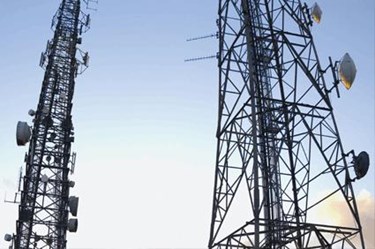The Week In 5G: FCC Opens Up More Spectrum, Carriers Target 2020 Deployments, Intel-Apple Alliance Sidelines Qualcomm
By Jof Enriquez,
Follow me on Twitter @jofenriq

The Federal Communications Commission (FCC) is picking up the pace in its drive to meet 5G usage in the United States by making available an additional 1.7 GHz of high-frequency spectrum, which will facilitate carriers’ plans to deploy next-generation mobile broadband services by 2020. The chips that support those services could come not from industry leader Qualcomm, but from rival Intel, which is looking to clinch a deal to install its chips on Apple’s devices.
In addition to opening up, last year, around 11 GHz of bandwidth in the millimeter wave bands for 5G use – 3.85GHz for licensed usage, and nearly 7 GHz in a 64 GHz to 71 GHz unlicensed band – FCC now proposes adding 700MHz in the 24GHz band and 1 GHz in the 47 GHz band, reports Dan Jones in Light Reading.
Verizon already has licenses needed to roll out its 5G network in the 28 GHz and 39 GHz mmWave spectrum bands next year, but other U.S. carriers will need additional spectrum allocations to offer 5G services. To that end, AT&T calls on FCC to begin highly-anticipated spectrum auctions sooner.
“We urgently need to get to the next step – auctioning this newly allocated spectrum so that mobile broadband providers can deploy as quickly as possible,” said Stacey Black, AT&T’s assistant VP of federal regulatory policy, according to Light Reading. “As an industry, we believe the best timing for auctioning the 28 GHz and 37-40 GHz bands is by December 2018.”
For now, FCC is offering other forms of support, though, as it recently extended license terms in the 3.5 GHz band, from 3 to 10 years, and increased its license area sizes to partial economic areas or counties (resulting in 416 to 3,144 different license areas, rather than 74,000 plus), according to Forbes contributor Fred Campbell.
While AT&T and Verizon seem concentrated on fixed wireless technologies for 5G using higher bands, T-Mobile, which is in talks to merge with Sprint, is focusing on using the low-band 600 MHz for its own 5G network, slated to be operational by 2020.
The end of the decade seems to be the common target date for carriers in most countries in the thick of the race to 5G. Currently, South Korea, Japan, and the United States are considered frontrunners, but Australia, the United Kingdom and the rest of Europe are not far behind. Greater spending for upgrades to 5G comes with significant risk, though.
“Ultimately, as carriers we’ve got to make a significant investment and put the capex down, and the business case still needs to be I think learnt, in many ways,” BT CEO Gavin Patterson said during Huawei’s Global Mobile Broadband Forum in London. “But then it is opening up all the verticals around IoT which are going to open up new revenue streams. Finding the use cases I think is the biggest challenge we have at the moment.”
Meanwhile, China Mobile just unveiled its 5G new radio system operating in the 3.5 GHz band and supporting 100 MHz of bandwidth, while India’s telecom operators claim they’ll have 5G ready by 2020, as well.
While spectrum needs are being filled, carriers upgrade to 5G, and 5G standards start to take form, the question of who will make the chipsets and modems that power 5G mobile devices remains.
Qualcomm, the dominant maker and supplier of chips for smartphones, is actively working with carriers around the world on 5G testbeds and trials. The company’s 5G modem chips and modems – including the world’s first 5G modem, the Snapdragon X50 – offer more specialized carrier features, but sources tell Fast Company that many of these features will not be widely adopted by carriers.
Perhaps more crucial for Qualcomm, which is embroiled in an ongoing legal battle with longtime partner Apple, is the latter’s reported choice to use Intel chips exclusively in future iPhones. Roughly half of current iPhones already have Intel parts.
“The end game, multiple sources have said, is to build the Intel modem onto an integrated system-on-a-chip (SoC) that would also contain the CPU, GPU, and other iPhone components. The SoC would be co-designed by Intel and Apple and would be fabricated at an Intel facility,” reports Fast Company.
Earlier this year, Intel unveiled its Gold Ridge modem, which can make 5G calls over 28 GHz spectrum. The company also recently announced its new XMM 8060 modem, part of its first 5G family of modems.
Intel also might leverage its expertise in high performance data center and cloud-enabled platforms, which will help carriers as they upgrade their infrastructure to 5G.
“It’s likely that most carriers will acquire a very significant number of Intel powered systems to run their data centers and offer a wide range of services to customers that could not be accomplished with older style dedicated switching gear. Intel will work with all of the traditional carrier infrastructure vendors (e.g. Cisco, Siemens, Nokia) to help make this transition, as well as enabling custom solutions directly with the major carriers,” according to Computer World.
